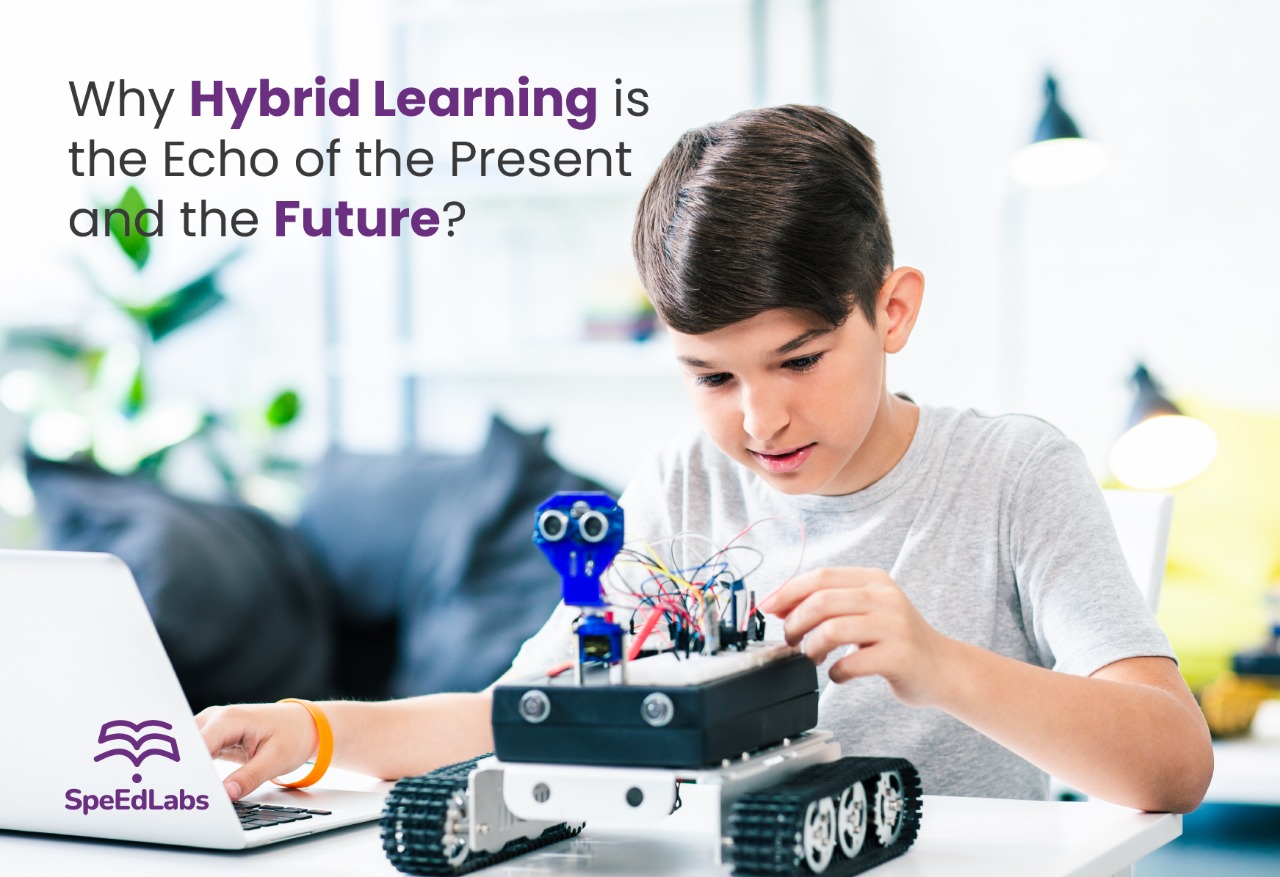The pandemic caused school closures in 186 countries, affecting more than 1.2 billion children. Due to this, educational institutions had to adopt online technologies at an alarming rate.
Socially impactful technologies have evolved and matured in response to the realisation that educating the masses will require innovative techniques. This will address the lack of information and development worldwide. Due to factors like lesser acceptability, easier traditional methods, and relentless roadblocks, many efforts in the social technology ecosystem do not reach the appropriate and desired scale or impact.
The concept of blended learning or a ‘hybrid’ model of learning has existed for over a decade, but it has gained a lot of attention recently due to this unprecedented global crisis. Several months ago, if someone had suggested all learning would take place online in the months to come and students (and teachers) would not be attending classrooms, it would have seemed far-fetched.
Covid-19 accomplished the impossible. As a result, educational institutions and educators had to consider ‘online’ education as an option. The process provided a lot of opportunities for learning. Tests and evaluations of different online learning models were conducted, and approaches that appeared most effective were selected. One such approach is hybrid learning.
What Is the Difference Between Hybrid Learning and Blended Learning?
The terms “hybrid learning” and “blended learning” are sometimes used interchangeably, but they are very different.
Blended learning can seem confusing, but you are not reducing face-to-face time. Instead of replacing face-to-face learning, it’s about providing online materials and tools that supplement it.
As a result, blended learning often consists of new initiatives such as project-based learning, which incorporate multimedia resources into common coursework and allow students to explore the holistic results of a variety of educational disciplines, including mathematics, science, and math and sciences.
In hybrid classes, these online tools are provided to students through remote learning portals and online learning management systems, so they can use them outside of the traditional school setting.
Hybrid learning vs. blended learning can be distinguished by a simple rule of thumb: if tools enhance face-to-face instruction, it’s blended learning. In the case of hybrids, they facilitate the replacement of in-person instruction.
Future of Hybrid Learning
Indian education and the job market have suffered from a lack of synchronisation for a long time. With the Hybrid model, trainees gain self-confidence and learn how to be self-disciplined and self-reliant, qualities that have real-world applications and boost their professional prospects.
By using the Hybrid Model of learning, teachers are able to teach more effectively and students are able to learn more effectively. The needs and problems of each individual are given equal importance and attention. Lectures are delivered through Live Sessions, which students can attend remotely, so there is little risk of students missing lectures.
Using Artificial Intelligence, teachers can plan classes, profile students, keep records, make learning predictions, design courses, and create performance analysis reports for individual students.
By utilising technology, complex assessments, detailed reports, comprehensive evaluations of students, peer benchmarking and granular reporting can all be made possible.
Advantages of Hybrid Learning
By combining personalisation and convenience, hybrid learning provides the best learning environment to meet the changing needs of students in today’s society.
These are some of the unique advantages of hybrid learning:
Learning at Your Pace
Hybrid learning allows students to learn at their own pace, thereby increasing retention. Through the use of synchronous and asynchronous learning activities, students can gain a deeper understanding of the subject matter based on their learning styles. It is easier for teachers to interact with students in a smaller group, which results in more effective and personalised interactions.
Flexible Learning Methods
Students who use a hybrid approach are in charge of their learning time, place, and pace. As a result of this flexibility, students are more likely to attend and participate in classes.
Detailed Assessments and Reporting
The use of technology in Hybrid learning supports comprehensive student evaluations, peer benchmarking and granular reporting.
Immediate Feedback
Students receive immediate feedback through customised assessments, live lectures, and live chats with their teachers.
Using Technology to Personalise and Engage
With Artificial Intelligence, learning can be tailored to suit different learning styles, resulting in improved learning outcomes. Technology can help make hybrid learning environments more productive through gamification, self-paced learning, and short videos with interleaved exercises.
Self-directed Learning
Taking a hybrid approach to learning requires the learner to take responsibility for his or her learning. By doing this, the student gradually moves from a teacher-directed learning style to a self-driven learning style, which proves extremely effective in higher education.
We are going to see more hybrid learning in the future. In order to create learning environments that combine in-person and online learning, education technologists must design them.
Also published on Medium.
